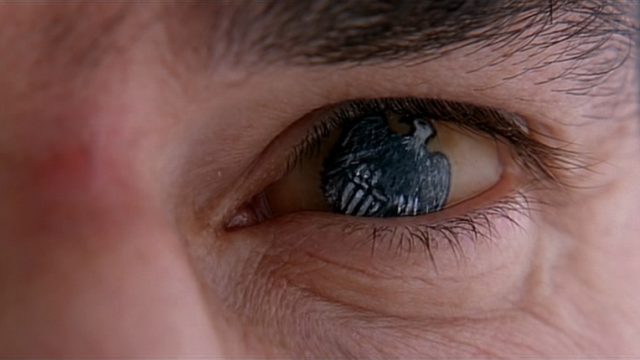“It would be like no one even knew we was ever here.”
Think of Gangs of New York as Martin Scorsese’s East Coast urban version of Blood Meridian, a work that takes a few details from history and blows them up into an origin story of the creation of America in blood and ownage. Daniel Day-Lewis is the Judge here, Bill the Butcher, one panel of this British actor’s quartet of iconic Americans at a moment of transition. (The Last of the Mohicans‘ Hawkeye, There Will Be Blood‘s Daniel Plainview, and Lincoln‘s Lincoln are the other three.) He’s the last of his kind here, a medieval warlord ruling the Five Points district of New York, proclaiming the virtue of the natives against the waves of incoming immigrants in the 1860s. (Joan Didion called this the disdain of those who arrived the day before yesterday for those who arrived yesterday.) Like the Judge, he embodies, right down to his eagle-stamped eye, an entire age and philosophy; like the Judge, he’s such a compelling figure he simply overshadows just about everything else here. Jim Broadbent, Liam Neeson, John C. Reilly, and Brendan Gleeson are on his level; Cameron Diaz and Leonardo diCaprio are not, and that may be the point–Bill isn’t so much defeated by diCaprio as by the numbers of people like him. (Still, can’t help noticing that diCaprio gets his face bashed in and branded with a white-hot knife without looking one bit less pretty. Must have been in his contract.)
Gangs of New York stands as Scorsese’s most ambitious film–it took as long for him to get it produced as Silence, and he had to have an enormous set to recreate the Five Points in Italy. That ambition comes through at every moment, with Scorsese deliberately scaling events up to operatic levels. One extraordinary aspect of this: the sound design, incorporating dialogue, street noise, and songs of the period in a dense, artful chaos that calls up Glenn Gould’s The Latecomers or John Cage’s Apartment House 1776. It’s literally a history you can hear. And like Blood Meridian, the most powerful moments are the beginning and the ending, which bracket this moment as part of a history now gone; the final sequence jumps from July 17, 1863 to September 10, 2001 in a series of dissolves (scored to U2’s “The Hands That Built America”) that feels like the essence of New York City: fuck you, we’re still here, and we always will be.
Gangs of New York streams free on Amazon Prime.


